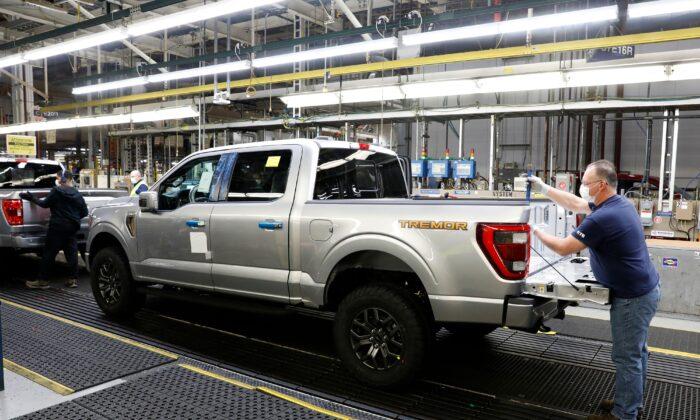WASHINGTON—Production at U.S. factories increased moderately in January as motor vehicle output fell for a second straight month amid an ongoing global shortage of semiconductors.
Manufacturing output gained 0.2 percent last month after dipping 0.1 percent in December, the Federal Reserve said on Wednesday. Economists polled by Reuters had forecast factory production rebounding 0.3 percent. Output increased 2.5 percent compared to January 2021.
Shortages of materials have also afflicted other segments of manufacturing, in addition to the motor vehicle industry.
Spending shifted towards goods from services during the COVID-19 pandemic, but manufacturers have struggled to cope amid an acute shortage of workers on factory floors and other places along the supply chain, caused by the coronavirus.
Manufacturing, which accounts for 11.9 percent of the U.S. economy, remains supported by still-lean inventories at businesses as demand for goods remains strong.
Production at auto plants fell 0.9 percent last month after slipping 0.4 percent in December. Excluding motor vehicles, manufacturing increased 0.3 percent in January.
Last month’s gain in manufacturing output combined with a record 9.9 percent jump in utilities to boost industrial production 1.4 percent. That followed a 0.1 percent fall in December.
Demand for utilities was boosted by freezing temperatures in many parts of the country in January. Mining production increased 1.0 percent, with oil and gas well drilling advancing 6.2 percent.
Capacity utilization for the manufacturing sector, a measure of how fully firms are using their resources, rose 0.1 percentage point to 77.3 percent in January. It is 1.8 percentage points higher than its pre-pandemic level but still 0.8 percentage point below its long-run average.
Overall capacity use for the industrial sector increased 1.0 percentage point to 77.6 percent last month. It is 1.9 percentage points below its 1972–2021 average.
Officials at the Fed tend to look at capacity use measures for signals of how much “slack” remains in the economy—how far growth has room to run before it becomes inflationary.






Friends Read Free